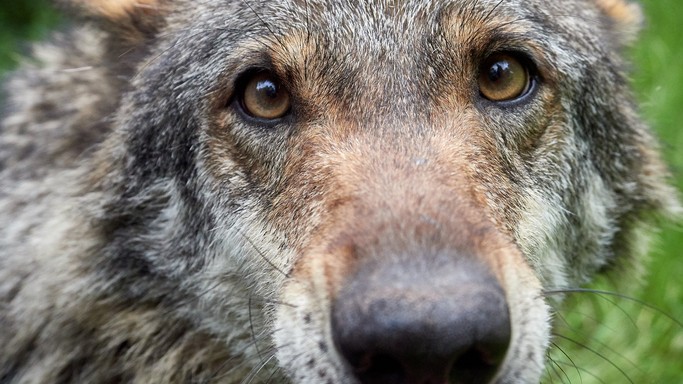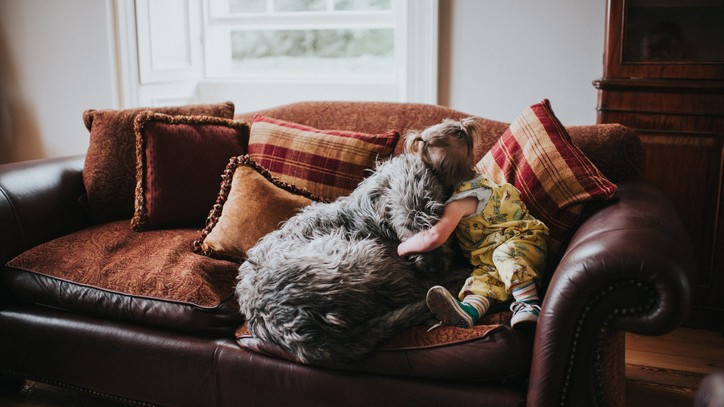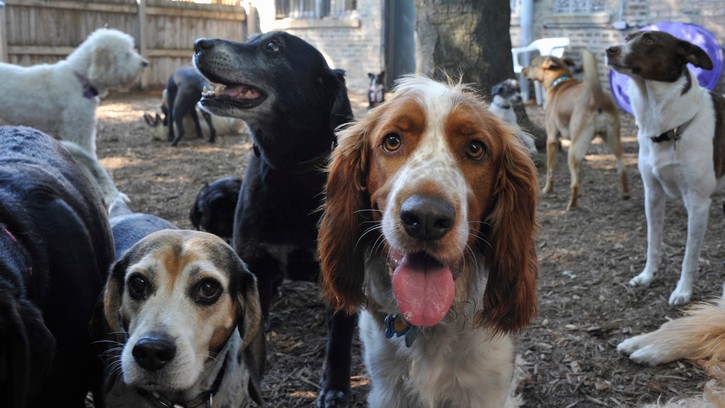From wolf to dog: How wild animals became our favorite pets
The change from wolf to dog started anywhere up to 34,000 years ago, but how did they become our pets? And why are there so many breeds?

It has long been thought that the transition from wolf to dog began with the grey wolf of Central Asia and that 95% of all of the dogs in the world have descended from the same three females. It’s a fact that dogs are so genetically similar to grey wolves that they share 99.96% of each other’s DNA but that shortfall is enough to make them mark human intervention and domestication over the many years dogs have been our best friends.
That said, the matter is not clear cut since a study in 2014 appeared to paint a very different picture. Back then, US researchers sequenced genomes from grey wolves based in China, Croatia, and Israel – three areas where dogs are believed to have originated. They did the same for two modern dog breeds – an Australian dingo and central African basenji – before concluding that dogs did not directly descend from wolves but had a common ancestor which has since become extinct.
This has led to a growing belief that dogs and wolves split from their ancestor between 9,000 and 34,000 years ago and that our furry friends are actually more closely related to each other than they are to wolves. Even so, the link between dog and wolf remains, albeit perhaps further back in the evolutionary chain.

What are the differences between wolves and dogs?
Wolves are intelligent animals that live in nuclear family groups, hunt and scavenge in small packs, and are well-equipped to survive the most extreme of environmental conditions. These nocturnal creatures need large amounts of energy, which they gain from the prey they hunt. They have a ravenous appetite and they can tear at meat using their large, curved teeth and powerful jaws. They can also go for long periods without eating, unlike our modern-day canine companions who need to fuel themselves up with the best dog food on a daily basis.
Born blind and deaf in the early-to-late months of spring, they also develop much faster than dogs. They’ll begin socializing with other wolves when they are just two weeks old – half the time of their domestic descendants – and they’ll be walking and exploring, too. Before long, they’ll be howling rather than barking to communicate with one another.
While wolves have a uniform appearance, dogs are incredibly diverse. There are 400 different breeds, some big, some small, some friendly, some fierce, but each one is loyal and social with an intelligence said to be on a par with a two-year-old child.
Indeed, a dog has a brain some 30% smaller than a wolf, but, unlike wolves, they are able to form a strong bond with man. While they may establish hierarchical orders with other dogs and be accepting of strangers, they know their place within human society. As such, the domesticity of dogs has changed their eating habits, making them more adapted to life as omnivores. Their chase instinct is more playful since they do not have to hunt for their food.
Get the best advice, tips and top tech for your beloved Pets

So how did wolves become pets?
For dogs to have become domesticated, one fact is irrefutable: they must have come into contact with humans at some point in their history. Scientists are doing their utmost to crack the precise details of their origins and with dogged determination, the pieces are starting to come together.
Contact with wolves is thought to have begun with the emergence of human settlements as many as 34,000 years ago. Since many of the settlements were in habitats that had pre-existing populations of wolves, these animals began to grow used to living in close proximity to us two-legged creatures. In fact, it’s thought that they approached humans rather than the other way around, feeding from the leftover meats that were discarded on the outskirts of such communities.
Humans tolerated their presence because the wolves helped to remove rotting food and provided a natural defence against outsiders. What happened next, though, is largely unknown. Some believe humans took in puppies from birth to tame them while others reckon some (but not all) wolves dropped their defences and came to rely on the discarded waste of humans, eventually gaining a trusting mechanism. This could have grown from a realisation that if they posed no threat to humans – and indeed were friendly – it would gain them some delicious rewards.
As a result, they became less aggressive and their appearance began to alter. They developed an uncanny ability to read human gestures which was vitally important in their usefulness to man. Humans liked their loyalty and the dogs began to accompany them on hunts. They became faithful guardians, protecting herds and dwellings and becoming so revered, some Egyptians mummified them upon death.
Gradually, they began to be kept in the home becoming a great part of the family – but only in more recent times. Women in Victorian England enjoyed keeping miniature dogs and the idea of having them around the house stuck. Today they remain great companions, valued for their friendship and skills.

Why are there so many different types of dogs?
Selective breeding – the choosing of male and female animals and plants with particular, favored characteristics – began with the domestication of dogs. Ancient humans picked out certain phenotypic traits such as a loud bark which would have been helpful for the protection of themselves and their property. They would have ensured these animals bred with other dogs, replicating the chosen characteristic among their offspring.
Hunting dogs were selectively bred so that their sense of smell (as in the case of bloodhounds) or sight (as with greyhounds) was enhanced. It meant the scent hounds developed smaller legs which helped keep their nose to the ground as well as long, lower set ears to sweep scents towards their nose. In contrast, the sighthounds had longer legs for a better sightline and they could pick up a graceful speed as they hunted down hare, foxes, and deer.
In the 19th century, selective breeding exploded in popularity, particularly in Victorian England. People kept their dogs and took them in as pets to be looked after and pampered. Designer dogs became popular.
Kennel clubs were formed to selectively breed suitable specimens and records of canine bloodlines began to be kept. Dogs were categorized by breed – that is, animals that display certain uniform physical characteristics due to the conditions imposed on them by humans. There are now 340 breeds recognized by the World Canine Club, with a great variety within each and stark behavioral traits such as herding, hunting, and companionship.

Dogs today
Dogs have played many roles over the years and today many dogs continue to work in a huge range of roles. But they have also grown to become loyal family pets that are drawn to humans like no other animal on Earth. It’s perhaps a throwback to their ancestral wolf line: dogs enjoy their human packs and allow us to assume the role of leader. Today, 750 million people around the world have a dog and there are eight million dogs in the UK alone. They can lead a pampered life (the average dog naps for 52,958 hours over its lifetime – that’s more than six years) but they provide companionship that’s second to none.
Dave has over 20 years experience in publishing during which he launched many successful magazine titles including How It Works, All About Space and All About History. He’s also pet parent to a retired police dog called Rebel, who can’t work anymore due to a health condition. When’s not busy trying to amuse a boisterous, three-year-old German Shepherd, Dave's the Editor on PetsRadar.

